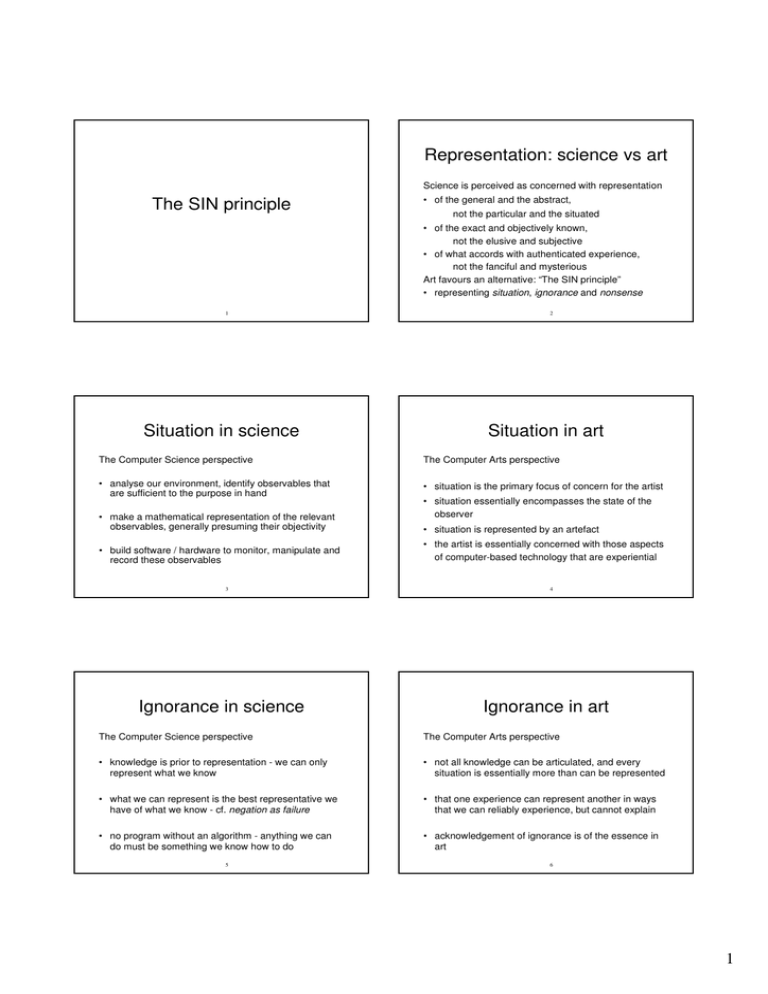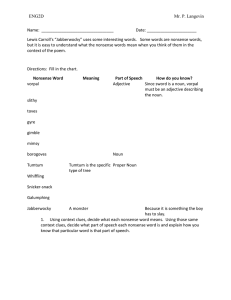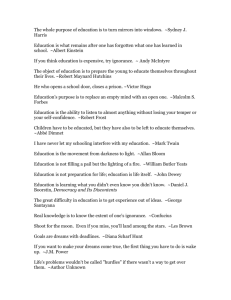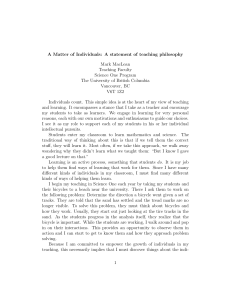Representation: science vs art The SIN principle
advertisement

Representation: science vs art Science is perceived as concerned with representation The SIN principle • of the general and the abstract, not the particular and the situated • of the exact and objectively known, not the elusive and subjective • of what accords with authenticated experience, not the fanciful and mysterious Art favours an alternative: “The SIN principle” • representing situation, ignorance and nonsense 1 Situation in science 2 Situation in art The Computer Science perspective The Computer Arts perspective • analyse our environment, identify observables that are sufficient to the purpose in hand • situation is the primary focus of concern for the artist • situation essentially encompasses the state of the observer • make a mathematical representation of the relevant observables, generally presuming their objectivity • situation is represented by an artefact • build software / hardware to monitor, manipulate and record these observables • the artist is essentially concerned with those aspects of computer-based technology that are experiential 3 Ignorance in science 4 Ignorance in art The Computer Science perspective The Computer Arts perspective • knowledge is prior to representation - we can only represent what we know • not all knowledge can be articulated, and every situation is essentially more than can be represented • what we can represent is the best representative we have of what we know - cf. negation as failure • that one experience can represent another in ways that we can reliably experience, but cannot explain • no program without an algorithm - anything we can do must be something we know how to do • acknowledgement of ignorance is of the essence in art 5 6 1 Nonsense in science Nonsense in art The Computer Science perspective The Computer Arts perspective • representations are valid and useful, or invalid and useless • parody, absurdity, exaggeration, fantasy central to art, to be explored within the constraints of integrity • a representation is directed at a norm, events outside this norm are singular and beyond this representation • representation is neutral wrt quality of experience • representation is not sharply constrained to sense vs. nonsense: cf. caricature, morphing • there are gradations of sense and plausibility associated with degrees of experience 7 EM and the SIN principle Situation • modelling state as the primary concern • state embracing situation and mind of modeller Ignorance • openness to semantic extension at any point • represents knowledge implicitly via interaction Nonsense • supports indiscriminate blending • gradations of sense and plausibility 8 EM - an enabling technology? • not functionally driven specification but emergence • experiential feedback ⇒ confidence in interaction • reliability and commitment after experiment • comprehension through interaction • bricolage - “design as you build” … individual skills and interaction styles as of the artist 9 Character of the EM culture 10 Conclusion • practice before philosophy and principles Science and art truly have more unity than talk suggests • not the exclusiveness of a work of art, but re-creation • common property: communicate & share, not protect false perception of science - cult of theoretical science situation, ignorance and nonsense are of the essence in experimental science • open functionality, explicit structure, not optimised cf. education as ‘no rules’ … evolving products of collaboration not about liberating the arts alone, but our science 11 12 2 References [072] Liberating the computer arts, Meurig Beynon Essays on Radical Empiricism, William James The Literary Mind, Mark Turner Experiment and the Making of Meaning, David Gooding No Silver Bullet, Fred Brooks I and Thou, Buber 13 3



